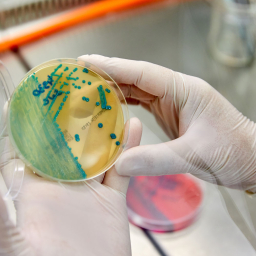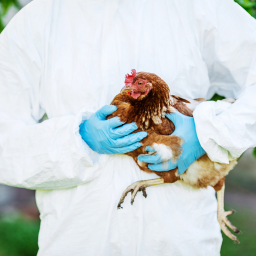NEW
Early diagnosis to prevent the spread of diseases between animals and humans
19 May 2025- At NEIKER we apply the One Health approach to the early detection of infectious agents in order to prevent risks to human and animal health
Zoonotic diseases, those transmitted between animals and humans, represent one of today’s major public health challenges. Their capacity to spread, their impact on animal and human health, and their link with environmental factors require a global vision that integrates human health, animal health and the environment, an approach known as One Health.
In this context, at NEIKER we have been working for years on the development and application of diagnostic techniques that allow early and accurate detection of the agents that cause this type of disease. The aim is clear: to promote a rapid and effective response that protects both livestock farms and society as a whole.
‘Early detection of the presence of an infectious agent allows quick and appropriate decisions to be taken in each situation, either by isolating suspected animals, administering specific treatments or launching vaccination campaigns. When action is taken from the first sign, the probability of the disease spreading is considerably reduced,’ explains Gorka Aduriz, a researcher at the Department of Animal Health.
This responsiveness is essential for diseases that are easily transmitted, such as those that are spread through the air or by vectors, i.e. organisms such as ticks or mosquitoes that can carry pathogens between animals and humans.
Avoiding the use of unnecessary treatments
In addition to its preventive and containment role, diagnosis contributes to a more rational use of medicines. Determining whether the origin of an illness is viral – and therefore does not require antibiotics – or bacterial – which allows the most appropriate treatment to be selected – is essential to optimise therapeutic resources.
‘This precision not only improves animal health, but also helps to reduce the unnecessary use of antibiotics, limits the emergence of resistance and minimises the presence of residues in food or in the environment,’ adds Gorka Aduriz.
At NEIKER we apply this approach in various lines of research. One example is our work on diseases such as tuberculosis and paratuberculosis in ruminants, where we have perfected more effective diagnostic methods to quickly identify infected animals, enabling us to act earlier and more precisely, optimising disease control and reducing their spread.
We are also advancing research on Q fever, with a focus on the genetics of the pathogen to improve diagnostic techniques. In addition, we address diseases shared between wildlife, livestock and humans, as well as vector-borne infections, the prevalence of which is closely related to environmental and climatic factors.
All these advances are channelled through the diagnostic laboratory, which analyses samples collected in the field to provide useful information on the health status of farms. Thanks to this data, prevention and control strategies can be adapted in real time, with informed and context-specific decisions.
A networked approach
Diagnostic work is not carried out in isolation. We maintain constant collaboration with companies, reference centres, universities, veterinary groups and networks such as RE-LAB, which allows us to update our techniques, share experiences and respond to the needs of the sector.
The interpretation of the results is also part of the service we offer. ‘In addition to the technical report, we provide direct support to the sector when they need clarification on the diagnosis’, says Gorka Aduriz. In addition to this, we offer informative sessions for professionals and scientific publications that include the most relevant advances.
Incorporating new technologies
To reinforce this capacity, at NEIKER we incorporate emerging technologies that allow us to improve the accuracy, speed and efficiency of diagnosis. These include the use of artificial intelligence (AI) to analyse large volumes of data and detect patterns that help predict outbreaks. ‘Through artificial intelligence, we can identify propagation trends and make more informed decisions, which allows us to predict the appearance of new outbreaks earlier,’ explains Gorka Aduriz.
We also apply advanced imaging techniques to detect clinical signs of both animal and plant diseases, even at a distance. These technologies allow us to obtain rapid and accurate diagnoses from a distance, which is essential in disease control, especially when animals are in areas that are difficult to access.
In addition, we are developing epidemiological models that allow us to anticipate possible risk scenarios, making it easier to take preventive decisions before outbreaks spread.






